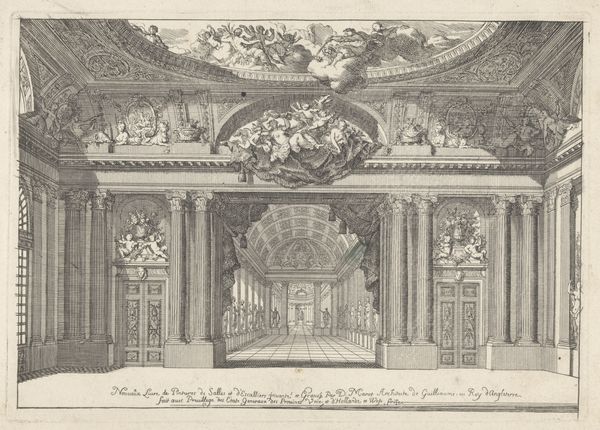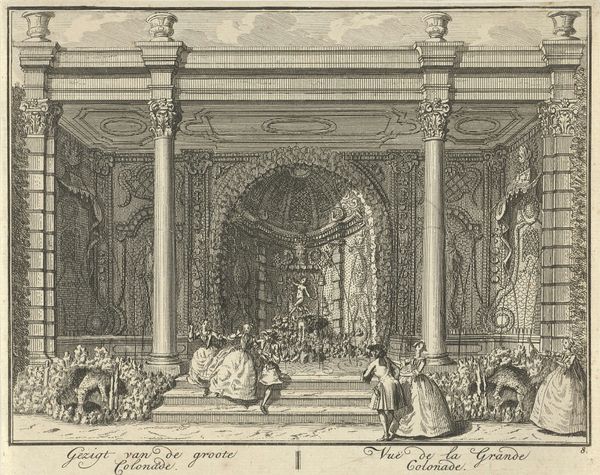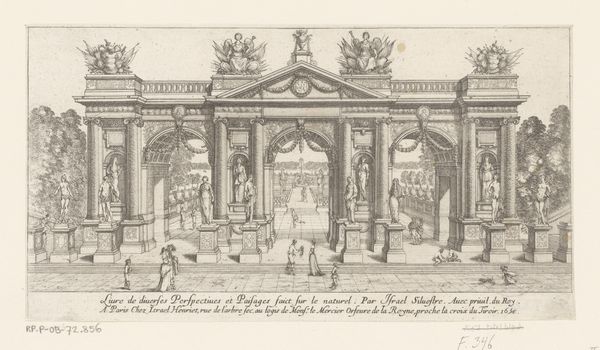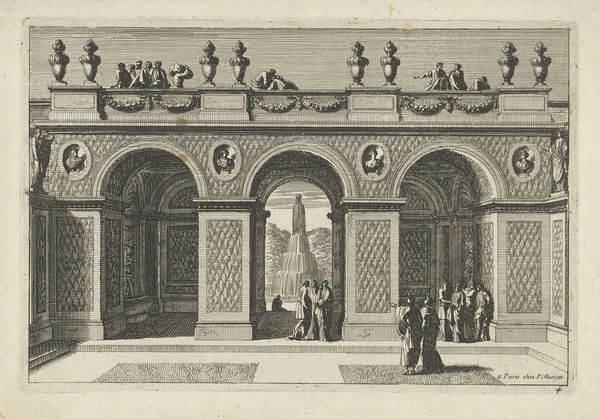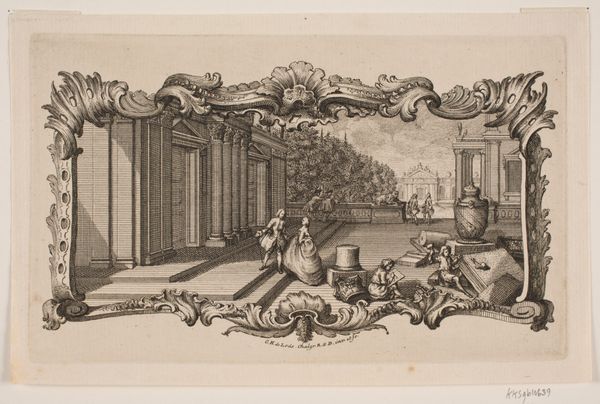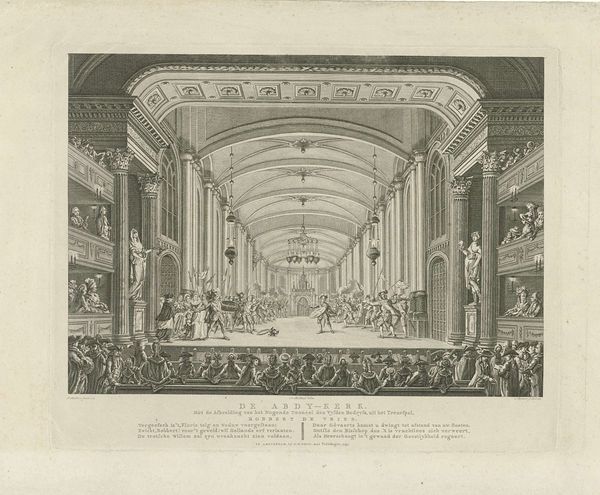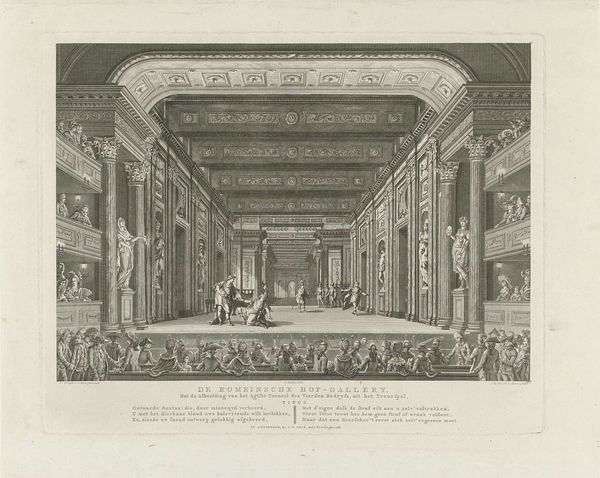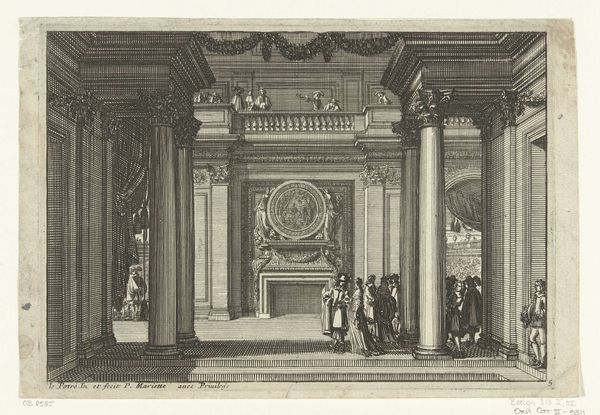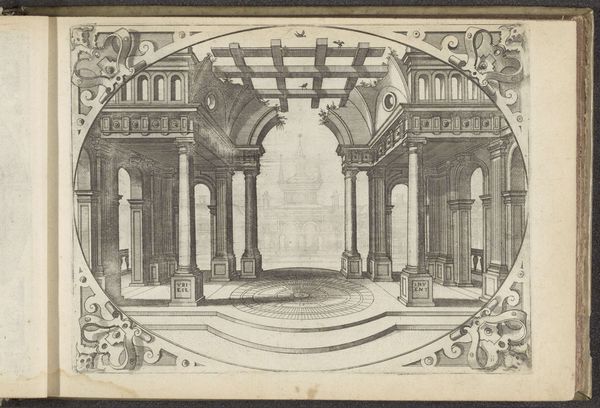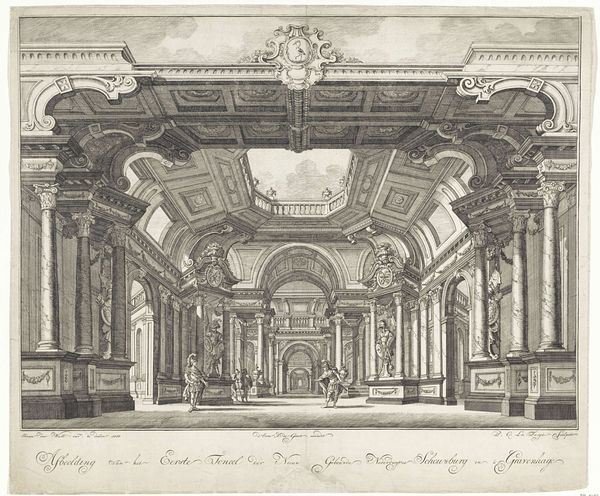
drawing, engraving, architecture
#
drawing
#
baroque
#
pen sketch
#
perspective
#
genre-painting
#
engraving
#
architecture
Dimensions: height 202 mm, width 296 mm
Copyright: Rijks Museum: Open Domain
Emanuel Eichel created this drawing of a gallery in rocaille cartouche in pen in the eighteenth century. The gallery is framed by a rocaille cartouche, an ornamental motif characterized by asymmetrical curves and shell-like forms, capturing the exuberance and elegance of the Rococo period. We see how the Rococo style extended beyond mere decoration; it manifested a cultural and philosophical movement that challenged the rigid and formal conventions of the preceding Baroque era. In contrast to the Baroque's display of power and grandeur, the Rococo embraced lightness, intimacy, and playful asymmetry. Think of the grotesque masks used by the Ancient Romans in their theatrical performances. Here, they re-emerge transformed into ornamental elements. Shells and foliage intertwine, evoking a sense of naturalism and fantasy. This echoes the human desire to control nature, which reveals itself in a decorative imitation of natural forms. The cyclical return and adaptation of such motifs highlights the enduring power of cultural memory, constantly reshaped and reinterpreted across time.
Comments
No comments
Be the first to comment and join the conversation on the ultimate creative platform.
